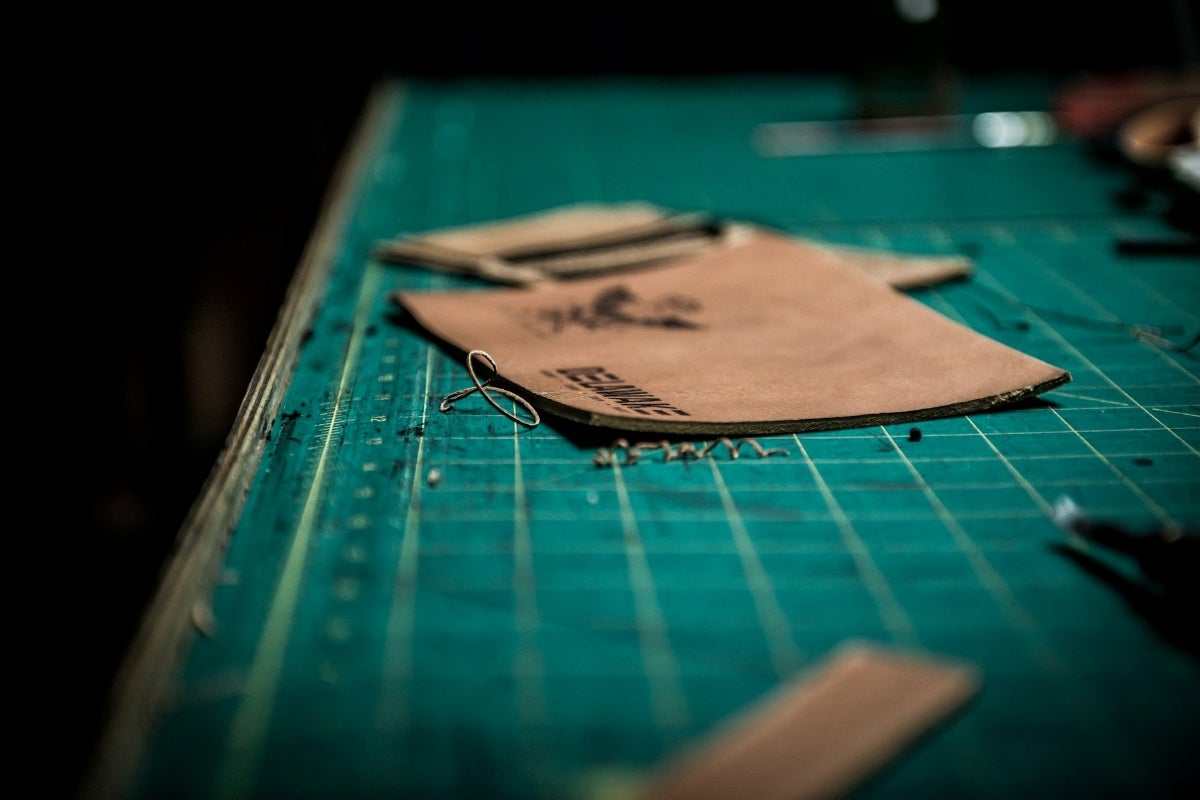Making leather is an intricate process perfected for millennia. Although the general concepts behind turning hides into pelts and then into leather are universal, steps vary by animal skin. To give you an idea of how to make belts, straps, holsters and sheaths from scratch, here’s your guide to cattle leather processing with cowhide. This can also be applied to most animal hides as well.
Leather Working Coverage on AllOutdoor
- New Weathered Series Finishes from Bianchi Leather Holsters
- 1791 Gunleather Introduces New Optics Ready Holster Options
- Galco’s NEW Leather Holster Care Kit for All Leather
- Galco’s Improved Royal Guard 2.0 IWB Leather Holster
Pre-Tanning
This phase involves steps to prepare your cowhide for tanning.
- #1 – Curing
- Rawhide is prone to contamination — it can decompose in a few hours. Preserve it by salting, sun-drying, chilling or freezing. You can also prevent deterioration chemically.
- #2 – Soaking
- Give your cured hide a bath to moisturize and increase its pliability. A good soak should get rid of dirt and stains.
- #3 – Liming
- Soak your cowhide in a lime solution. This should help eat away the unwanted organic substances from the skin, including hair roots, epidermis, soluble protein and undesired fats. After this alkaline bath, your cowhide becomes a pelt.
- #4 – Fleshing
- Remove the remaining undesirable components from the pelt with manual tools, which should be painless since the lime has weakened them.
- #5 – Bating
- Use acid salt to neutralize the pelt’s alkalinity. It should lower the pH level, allowing the tanning agents to bind more easily and penetrate the raw material later. This step should also make the pelt softer.
Tanning
In this phase, the cattle skin’s collagen structure chemically changes, boosting its resistance to moisture, microorganisms and chemicals. Although you can use various methods to process the material, tannins are the traditional option. Treating your pelt with these plant extracts produces brown, firm and thick leather.
#6 – Vegetable Tanning
Transform your pelt into leather using tannins. They come from the bark, trunks and oak tree leaves. You can also source them from eucalyptus, quebracho, maples, red mangrove, sumac, wattle and willows.
Combine your tannin extracts. Your blend dictates the finished product’s strength, color and texture. Nailing your desired features involves trial and error, so experiment with various blends to see which delivers the best results.
Soak your pelt in a container with your tannin extract blend. Let it sit for a few months, then fish it out. Oil, wax or hot-stuff your tanned pelt to make it more durable and supple.
Finishing
This phase involves steps for enhancing your tanned cowhide’s physical properties.
#7 – Wringing
Squeeze out the moisture from the leather to expel the liquids it absorbs during tanning. Let it dry until ready for slicing.
#8 – Splitting
Cut your leather lengthwise to thin it into multiple layers, which only some would have a grain surface. As for thickness, it’ll vary depending on the type of item you’re intending to make.
For example, if you’re making belts and straps, you’ll want to aim for a thickness between eight and 10 ounces to ensure those items can preserve their integrity for a long time.
Before investing your time and energy into this kind of project, do you research to determine the correct thickness for your intended final product.
#9 – Shaving
Shave the thinner pieces of cattle leather to refine it. Removing excess material is vital in achieving your preferred level of thickness. Expect a large amount of dust when shaving dry leather.
Although an all-around cutting tool may do, flat leather, round and skiving knives yield better results.
#10 – Retanning
Repeat the tanning process to make your stabilized, treated and refined leather more delicate and usable for crafting gun belts, shoulder holsters and other hunting gear. Wash and dry your leather between tanning steps.
#11 – Dyeing
Apply oil-based or water-soluble dye coats to the leather to enrich its appearance. Dyeing cattle leather is like staining wood — the substance penetrates deeply into the material.
Dyes may contain harmful substances like benzidine, so work in a well-ventilated area to air out pollutants. Wipe down the leather with a dry rag to remove any impurities, such as dirt and oil from your fingers. Wear gloves to keep the material clean and protect your skin from discoloration.
After preparing the surface, apply the base coat in a circular motion using a cloth or sponge. Overlap half of the areas you pass over, and go beyond the edges to ensure even coverage. Add more dye to your applicator when it gets spotty.
Apply the second coat diagonally to the right and allow it to dry. Apply the final coat to the left. Consider using a coat of finish in a circular motion and buffing the material to keep the dye from bleeding into clothing.
#12 – Fatliquoring
Introduce fat to make your cattle leather plump, elastic, less wrinkly and antifungal. The amount of fatliquor, like mahogany seed oil, you apply ultimately determines the material’s softness.
#13 – Drying
Remove moisture from the material’s surface by hanging or vacuuming it to smooth wrinkles.
#14 – Staking
Beat the leather to soften its texture to your liking.
#15 – Surface Finishing
Put the finishing touches on your leather to enhance its color and eliminate cosmetic defects. You can coat, polish, grind and emboss it until you’re satisfied with its physical properties.
Make Timeless Leather Crafts With Animal Hides
Turning raw animal skins into exquisite leather is easier said than done, but it’s a labor of love. Although each hide requires nuanced consideration, familiarizing yourself with these steps should help you get a handle on leather processing.

The post Making Leather from Animal Hides is Simple with these 15 Steps appeared first on AllOutdoor.com.
